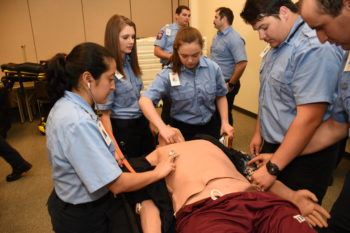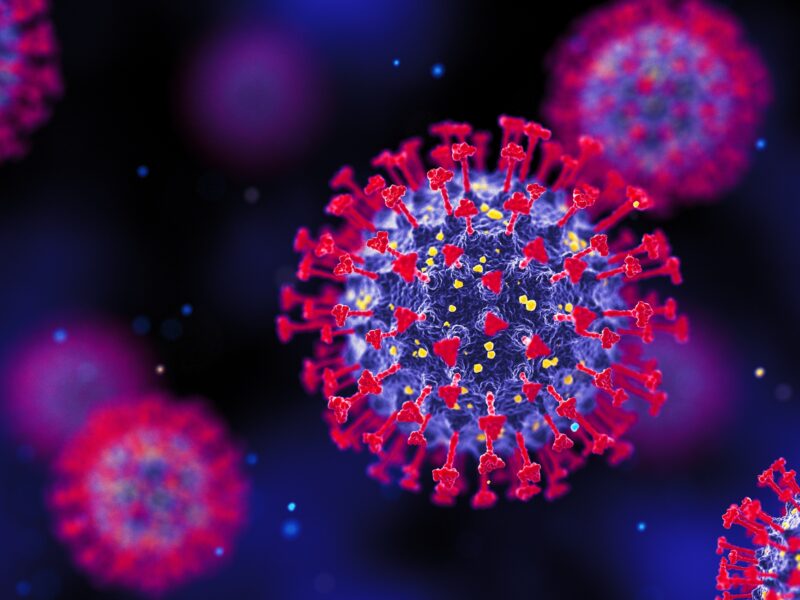Texas A&M Emergency Training Updated To Focus On COVID-19

The Texas A&M Engineering Extension Service (TEEX) is now offering unique training methods and human patient simulators to prepare first responders to treat the disease caused by the novel coronavirus, COVID-19.
TEEX has been offering similar training related to other diseases since 1998. The new COVID-19 training focuses on how to identify patients with the virus and protecting first responders from exposure and contamination while using proper protective equipment.
The course uses mannequin-like human patient simulators as training aids that can mimic the various effects of exposure to diseases such as COVID-19 or toxins, said Kathy Wall, training coordinator at TEEX’s Emergency Services Training Institute.
Most training is conducted at a TEEX host location, while some is also done online, Wall said.
Those being trained include emergency management personnel, nurses, physicians, county, state and federal medical responders, public health personnel, private sector medical responders, public safety dispatchers and other groups, she said.
“We believe that no other organization does this type of mobile training with human patient simulators,” Wall said. “These are for disease situations or biological threats. For coronavirus cases, patient management is similar to other highly infectious pathogens, but the key will be recognizing the signs and symptoms of the virus, and these are being taught to first responders right now.
“With proper preventative practices, we now know that the probability of someone being exposed to COVID-19 can be decreased, but what we don’t know about COVID-19 is what raises concerns,” Wall said. “The earlier we diagnose a person with COVID-19, the faster we can start treatment. The problem is often that people can be infecting others without symptoms.”
As for those “patients” used in the training, Wall said they are a “high fidelity human patient simulator” that facilitates learning by mimicking the signs and symptoms of illness and injury. She said this gives participants the opportunity for hands-on training.
“It also provides excellent discussion points and interaction for the training participants,” Wall said.
She said TEEX provides training to more than 3,500 participants each year on planning, preparing and responding to both natural and man-made disasters.
The training provides participants with information on identification and treatment of many biological agents. Many of the agents encountered can be contained by preventive medical countermeasures, Wall said.
“Our standard courses are 16 hours – a two-day course – and the Personal Protective Measures for Biological Events, which includes COVID-19 training, course is a one-day course. As you can imagine, COVID-19 will most likely dominate our course discussions,” she said. “We think when we as a nation flatten the curve, our training programs will see an increase in participation. There are so many first responders and first receivers that will want to know what happens, and how we prepare if this were to happen again.”
The TEEX training programs are offered nationwide at no charge through TEEX’s National Emergency Response and Recovery Training Center under the DHS/FEMA Homeland Security National Training Program Cooperative Agreement. The main target audiences include healthcare personnel, emergency responders, workers at ports of entry and any personnel who might come into contact with a dangerous biological agent.
TEEX training methods are performed in conjunction with protocols set by the Centers for Disease Control and Prevention.
Media contacts:
- Kathy Wall, 979-845-2409, wall@teex.tamu.edu.
- Keith Randall, 979-845-4644, keith-randall@tamu.edu.





